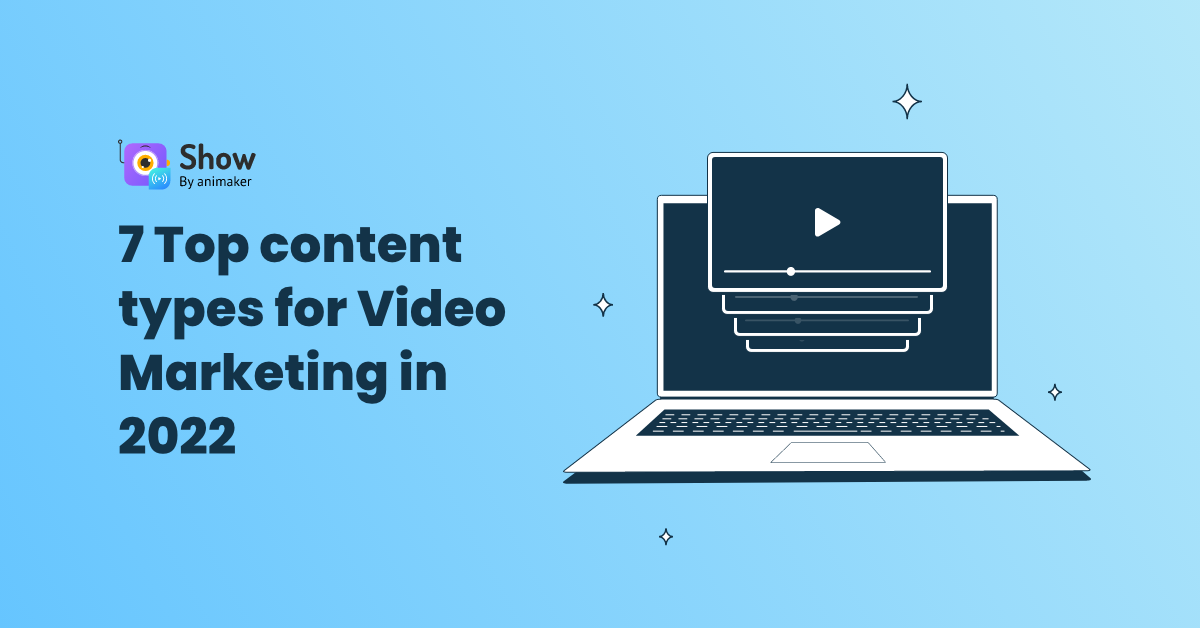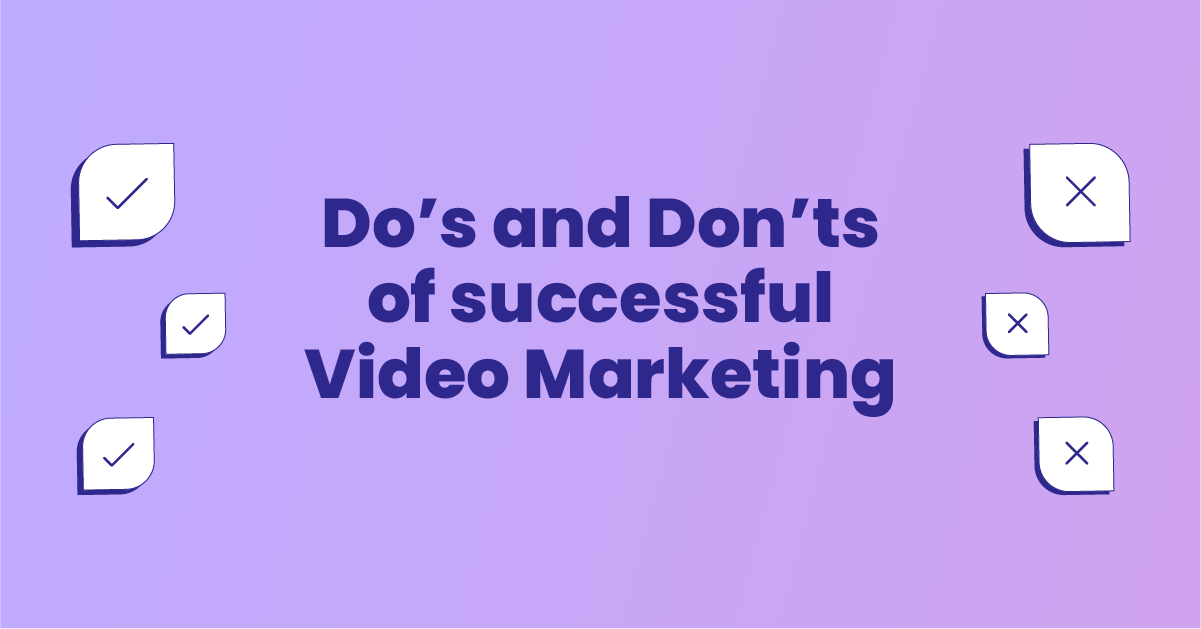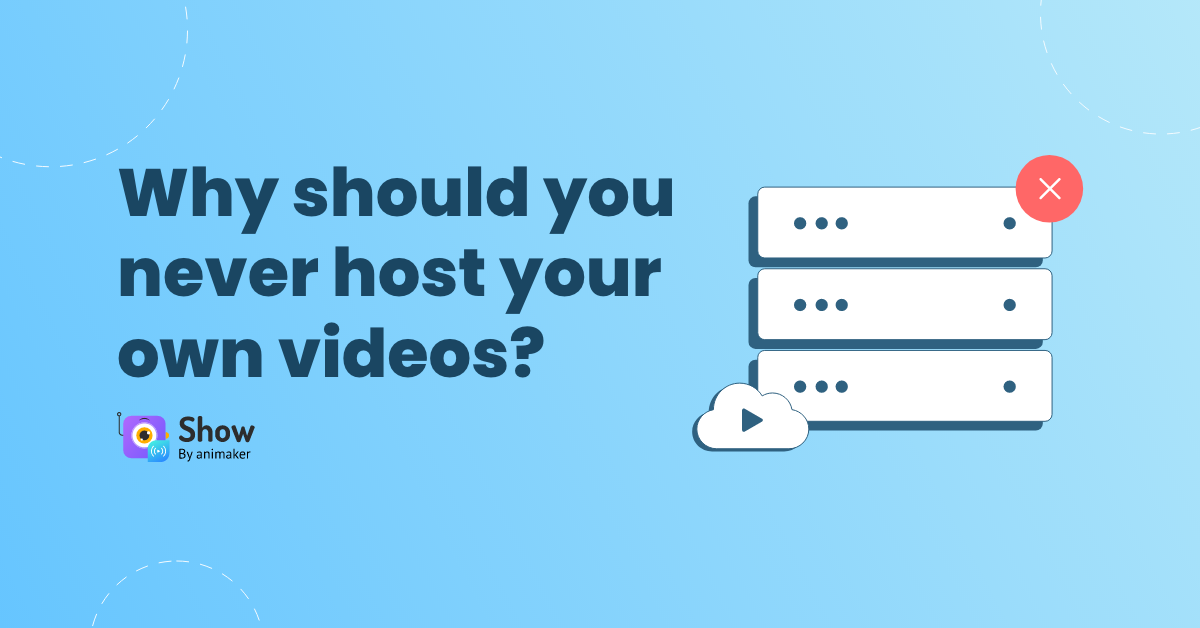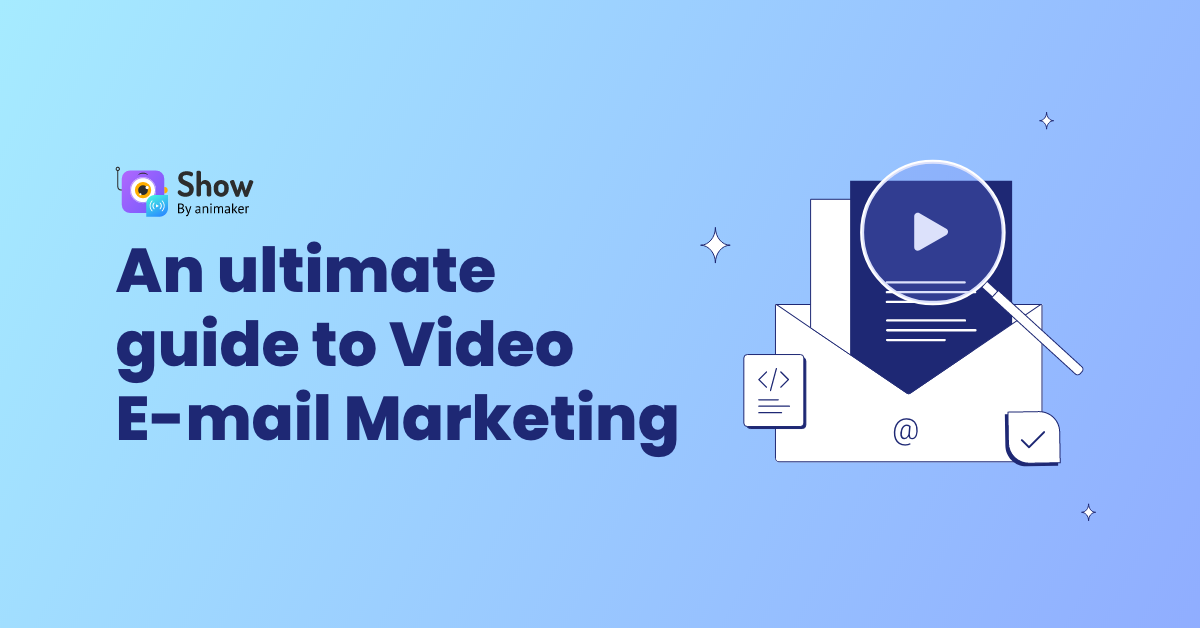7 Top content types for Video Marketing in 2023
People watch at least 100 minutes of video every day. This behaviour is not going to change in the near future. If anything, you will see the numbers growing- wildly at that. It is the dream of every marketer to keep their target market engaged. There is no doubt that video content will keep hogging the limelight, and rightly so. Video marketing is a $135 billion industry in the US alone, according to SocialMediaWeek.
People love watching videos. There is little effort in consuming it, unlike reading blocks of text. It keeps the viewer engaged with visual elements and there is a storyline that piques their interest. According to a survey by HubSpot, 31% of brands publish only two to four videos per month. It is time that brands invested more in videos.
Here are a few more numbers that will persuade businesses to spend more on video-first marketing:
- The binge-consumer in us shouldn’t be surprised to know that people process visuals 60,000x faster than text.
- 91.9% of viewers are happy to watch any type of video.
- HubSpot says that social media posts with video content earn 48% more views.
- 75% of users take action after watching a brand’s video.
Video content types that marketers should use in 2023:
There are different video content types that are useful for various use cases. Here is an outline of the top 7 video content types, and how and where to use them for effective ROI. For businesses that are still dicey about investing heavily in video content, this could give you the much-needed clarity.
1. Explainer videos
Users love watching videos to learn about a company’s products. Explainer videos make it easy for potential customers to find answers to some of their pressing questions about your product.
Can you guess the number of times your query on Google took you to an explainer video? Yes, that’s what we are talking about. You can create in-depth explainer videos that will not leave any of your potential customers hanging. The explainer video can end with a CTA where they can get in touch with you.
2. Testimonial videos
There is nothing as powerful as a recommendation from someone who the potential customer can identify with. Would you believe a celebrity tom tomming about a product in an advertisement? You’ll trust a layman who has no vested interests. Customers are more likely to check out a testimonial or two before making the buying decision.
How do you get this? Request a customer willing to jump in front of a video and ask them to share their thoughts about your product honestly. It could be a non-scripted video taken from their mobile phones or from a studio setup where you ask them specific questions. Both of these are effective.
3. Onboarding videos
These videos teach your target market how to use your product while simultaneously building value. Onboarding videos reduce customer churn by a considerable margin as you give them an opportunity to see what the product has to offer and mitigate any confusion about how to get value from it. New customers are gung-ho about the product, but when they cannot see any sort of value immediately, they leave and don’t bother to return. This is where onboarding videos add value.
By creating a compelling onboarding video, the potential customers will know what they can expect once they become paying customers. It can instantly communicate the value of your product.
Featuring your onboarding video on the landing page itself is a good strategy. Dropbox wanted to make it easy for their customers to understand their product. So, they featured their onboarding video and download link on the landing page. They got 5 million new customers and $24 million in revenues, because of this move.
4. Tutorial/How-to videos
A tutorial-style video walks your potential customers through your process, or it could answer a set of commonly asked questions. It is an essential part of your content marketing effort as how-to videos build clarity and credibility for the viewer. The tutorial video should include actionable steps that anyone can repeat.
It should include easy-to-consume captions and simple graphics and follow a format that helps the user understand the offering in a single viewing. For the marketer in you, it captures the oft-used “how-to” in the search results.
5. Social media videos
When Instagram was launched, it was just a vanilla photo-sharing service, but not anymore. These days, on Instagram, videos galore. Also, videos have much more significant traction on social media sites, especially bite-sized ones. They will get you more traffic and engagement as the attention span on networking sites is even lesser than usual.
Ensure that you tell the viewer quickly what your video is about in the first few seconds. A video posted on Twitter might cut out important information when you put it on LinkedIn. So be mindful of the screen dimensions and shapes for each social media site. Play by the rules of each social media site.
6. Product Demo Videos
You might also want to create product demos to highlight a particular feature or the entire product itself. Product demo videos are great for educating your audience and helping them understand what you do. When creating a product demo video, ensure the production value is of high quality. These types of videos are the ones that convert those who are on tenterhooks into paying customers.
7. Educational videos
As the name goes, educational videos are all about educating your audience. For example, you could create videos where you tell your potential customers how to use different features in your tool. Customers who are not sure about how to use your product optimally could be made to go through a video series of different use cases, including real examples. Educational videos are great to help move prospects from the awareness stage to the consideration stage.
Information-packed live streams on a social media channel, how-to/instructional videos, product demonstrations, webinars, and online video courses, are some of the most effective educational videos.
Wrapping up:
The above 7 types of video content can be used across the marketing funnel to close more deals. The more videos you include across multiple touchpoints, the easier it is going to be to get them deeper into the funnel. Marketers firmly believe in the power of videos, that’s why 88% of them commit to spending more on creating them. Video First Marketing will keep evolving, and you need to use them effectively to get the best results.



